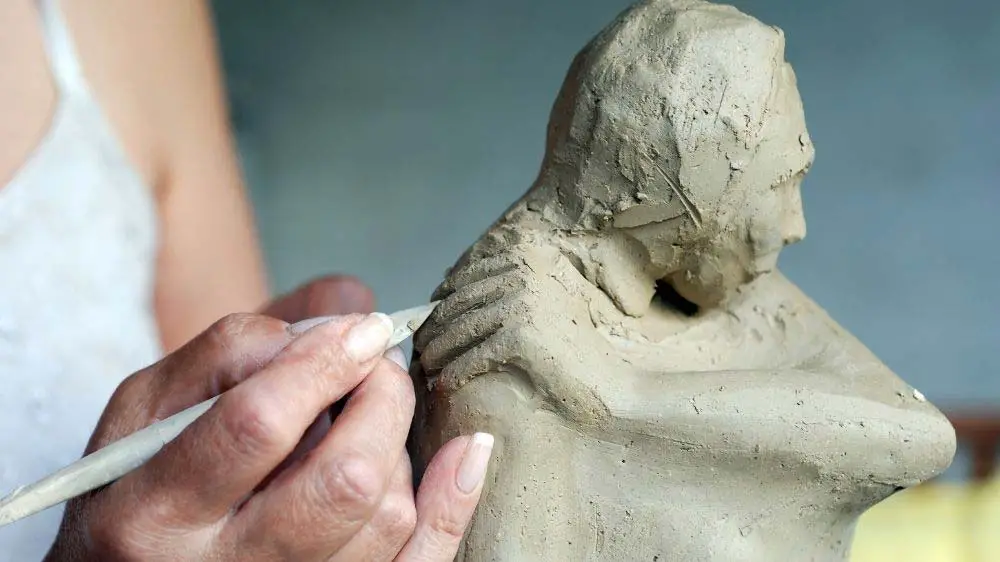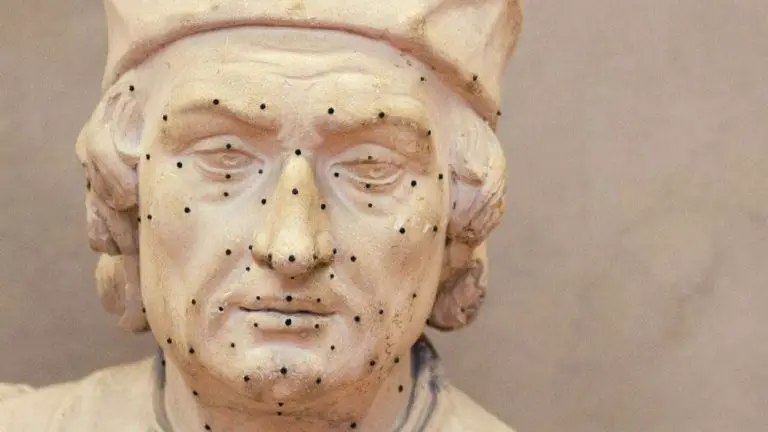How To Price a Sculpture: An Eight-Step Guide
Becoming a professional sculptor and entering the art market can be exciting and scary. How will you find buyers? Will you be successful? Maybe you dream about seeing your work on display in a museum for the world to see. Selling your sculptures comes with more practical questions, too, such as how to price them.
Deciding how to price a sculpture can be difficult for anyone new to the professional art market. There are several things to do when you price, including figuring out your market, comparing yourself to other artists, and understanding the difference between wholesale and retail.
If you feel like you are ready to start pricing your sculptures and making them available for sale, this guide will help you figure out what your art is worth.
The most important thing about pricing is to take a realistic look at your work, and your competition. It would be great to sell your sculpture for a lot of money, but you might find after following our tips that it’s not worth that much… yet.

(This article may contain affiliate links and I may earn a commission if you make a purchase)
Learn About The Market For Sculpture
The first thing you need to figure out when pricing your sculpture in the art world is who your market is. Are you selling in a big city (like Los Angeles or New York City), or small town? If you have a website, are you going to sell your art internationally? The market you choose to sell your art in plays a big role in the price you can ask for your work.
If you choose to sell locally or regionally, you need to recognize that you won’t have the same exposure to potential buyers that an artist selling in a big city does. A smaller buyer pool can mean that buyers have smaller budgets. Selling in a smaller market may also mean less competition, which can be to your advantage.
To learn what you can expect your sculptures to sell for in your market, visit local galleries and artists’ cooperatives to compare prices. Once you determine the average price in your area, you should choose a price on the lower end to attract buyers. This is especially true if you are not an established artist. Once you begin selling, you can choose to increase your prices.
Online Sales and Social Media
The internet and social media have been a boon for artists looking to sell their products, especially those that choose to create outside major art centers. If you plan to sell your sculpture online rather than in a gallery exhibition or art show, do your research.
Since you can potentially reach an international market with online sales, you may be able to sell your work for more than you can if you only sell it locally. Just remember, you do have competition online, so you want to keep your prices in line with what other artists are asking.
Define Your Art
What kind of art do you make? How do you categorize it? These are important questions to ask yourself when you are determining the price of your piece. There are different markets for different types of art, and you want to price your sculpture appropriately.
Sculpture, unlike painting, has a lot of flexibility in size and display settings. This can make it hard to figure out what your style is and how to price it. A sculptor who makes large abstract pieces meant to be displayed outside is creating something similar yet very different from one making realistic, small-scale sculptures.
Defining your art gives you a starting point when it comes to comparing yourself and your art against other artists’ works.
Compare Yourself to Similar Art and Artists
We understand that you and your art are original and unique, but it’s not for the purposes of pricing. This is why you need to define your art and your market. Although there might not be anyone making the same sculptures you are, artists create similar enough art for you to compare sales prices.
There are other things you need to consider when it comes to comparing yourself against other artists than the type of sculpture you create:
- Material Used: The cost of materials is a large part of the price charged on any artwork. If you work in ceramic and a similar artist works in bronze, then they can charge more because of the materials they needed to use. Be sure to look for artists who work in the same medium as you so that you can get an accurate idea of prices.
- Subject Matter: While some artists create pieces of all different subject matters, if you only create abstract or representational pieces, you should compare yourself to artists who do the same. Although there might not be anyone else who creates the pieces of the exact same subject as you, you can look for those who are similar.
- The Size of Their Sculpture: Size is important when it comes to the price of your sculpture. If you produce small and medium-sized pieces, it doesn’t make sense to compare yourself to an artist who makes large-scale sculptures, even if their style and materials are the same.
- How Much Skill is Involved: All sculpting takes skill, but some types require years of training and special equipment, and others do not. Welding pieces of iron together takes a different skill level than sculpting from clay. This should be reflected in the prices of the pieces.
- How Long They Have Been Selling For: If you are an emerging artist, new to the market, you should not be comparing yourself to an artist that has been selling for years. They have built a reputation that allows them to charge more than a newcomer. If you see established artists that create similar works to yours, price yourself on the lower end of their prices.
Once you’ve evaluated yourself against other artists, you have a good place to price your work. You should keep making comparisons as you sell your work. Chances are you’ll want to raise your prices at some point, and being up to date on where your work ranks will make the process easier.
Where To Find Similar Artists
Depending on where you live and work, it may seem hard to find artists with whom to compare yourself. It will require time and effort to find them, but it is worth it.
Social media is a great place to identify artists. When you do, you can check out their websites and online portfolios. Visit galleries and cooperatives in your local area to discover other artists.
Once you’ve found other sculptors producing similar work to yours, be honest with how your work compares. Go through the parameters listed above, and you should come up with a fair price for your work.
Pay Yourself an Hourly Wage
Just because you’re an artist doesn’t mean that you are not entitled to pay yourself a wage. When you are starting out, it is tempting to sell your art for what the materials cost. You need to remember that your time is also valuable and that you should be compensated for that time.
It can be hard to figure out what a fair hourly wage is. The national minimum wage is $7.25 an hour. However, most people recognize that this is not a livable wage. Scholars at MIT have determined that the minimum living wage is $16.54 an hour. This is a good place to start when determining how much you should pay yourself.
If you decide that your hourly wage is $20 and it takes you 30 hours to create your sculpture, you can price your piece at $600 plus material costs. If this is higher than what similar pieces are going for, then you need to adjust your hourly wage. If your wage seems low now, remember that you’ll be able to increase that rate with more sales and experience.
What is the Cost of Materials?
As we discussed in the previous section, it’s important to add the materials’ cost into the final price. Depending on what type of sculpting you create, your materials may be a big portion of the sales price. For instance, the materials for a bronze sculpture will cost more than a similar sized clay sculpture.
Don’t feel like you need to compromise on your materials’ quality to keep your prices low. The right buyer will be willing to pay for your sculpture.
Buyers might not understand the cost of materials and how that affects the price. Keep records of what you pay for materials, and be prepared to let buyers know. Since your materials cost is a fixed amount, if you find that it pushes your sales price too high, you can adjust your hourly wage down a bit.
When Pricing Your Sculpture, Stick To Facts, Not Feelings
There is no question that artists are passionate about their creations. You’ve spent hours putting work into the production process. When you are pricing your artwork, you need to be objective about your work, however. You cannot price art based on your feelings.
Your personal opinion of your art, no matter how beautiful your work is, is not a quantifiable measurement. That is why you need to compare yourself and your sculptures to other artists to get a realistic price. You might feel that you are just as talented as a world-famous sculptor is, but until the art market agrees, you cannot charge the same prices they do.
Another thing to remember is to price all your sculptures similarly. If you price one piece significantly higher than the others because it’s your favorite, you might never sell it. Just because you feel it deserves a higher price than your other work, doesn’t mean that buyers will agree. It’s also important to keep in mind that just because it sells for less doesn’t make it “less than.”
Where and How You Sell Your Sculpture Matters
While it’s important to compare your sculptures to similar ones to get a good idea of what you can sell for, where and how you sell your art can also determine the price. Whether you sell online or have a gallery show, you need to price appropriately.
Wholesale vs. Retail
Most ways that sculptors and other artists sell their work falls under the categories of wholesale and retail. Wholesale is when you make a direct sale to the buyer and get to keep the whole amount. Retail sales are when you work through an intermediary.
Open Studios & Local Events
If you live and work in a town with a thriving artists community, chances are you’ve seen open studio events. These could be informal open hours when visitors can watch you work and make a purchase to more structured events when multiple artists have open hours and groups can come through.
Visitors and buyers to these events are usually local residents who want to support their arts community. Most of the sales will probably be impulse buys and on the lower end of the price scale. If you plan to participate in these events, you should make sure to have a few items in the $50-100 range. These events are generally wholesale events since you are making a direct sale.
It’s unlikely that you will sell a large, more expensive piece in an open studio show. However, you never know when you might catch the interest of a buyer who could return to buy a bigger piece or with a commission request.
Commissions are Made To Order
Commissions are pieces that are made at a buyer’s request. When you have a commission, you will work with them to determine what they want, from styles to size. Although you need to consider the buyer’s wants when designing your sculpture, stay close to your aesthetic. They picked you because they like your work.
Since the design process involves more work than a non-commissioned piece, you may need to up the amount you pay yourself. Be careful not to price the commissioned piece too high, though. The buyer probably has a good idea of what you normally charge, so you want to stay near that price.
Sell Your Sculptures Online
As we said earlier, personal websites and social media accounts are becoming an increasingly popular way to sell art. Since you are selling directly to the buyer, it is a form of wholesale sales. Remember to factor in the website maintenance costs and payment processing fees into your final sales price.
Gallery Prices are Higher
Having a gallery show or a few pieces on display is an achievement for any artist. Galleries, especially those in big cities, tend to attract serious buyers. Selling through a gallery is the most common type of retail art sales. Because of this, gallery prices are higher than the prices you have on your website.
While getting a higher price for your work sounds great, you need to remember that they take a substantial commission on any sales. The standard fine art gallery commission is 50%. A piece you would sell on commission for $350 would need to sell for $700 in a gallery to net you the same profit.
It’s not as simple as doubling the price tag, though. Galleries want to sell your art for you and make money. Therefore, they have a say in the prices set to list your art. You might need to raise your website’s prices to match the gallery prices, so buyers don’t choose to buy directly from you rather than the gallery.
It’s Okay To Raise Your Prices
Much of what we’ve discussed above is how to price your sculpture when you are new to the market. What if you have been selling for a while and want to raise your prices?
Raising sales prices is a reasonable evolution in your life as a professional artist. However, you should meet these criteria before you do so:
- Your art sells regularly
- You’ve had a show where at least half your art sold
- You’ve been selling consistently for a year or so
- You’re able to sell at least half of your work within six months of creating it
When you feel it’s a good time to raise your prices, don’t go crazy and double everything. A good place to start is increasing the price tags by 10-15%. You can go as high as 25% if you have reached a major professional milestone, such as winning an award or having your work purchased by a metropolitan museum.
When you raise your prices, be prepared to talk to customers about your reasoning. Back up your prices with facts, like sales records. Don’t be put off if potential customers do not like that your work is more expensive if you feel like you can justify it. No matter what field they work in, most people get pay increases as they become more experienced. This is also true for artists.
Pricing Art is Objective
The most important thing to remember when pricing a sculpture is that although art is a personal process that buyers and creators have a connection to, the price of the object needs to be determined objectively. It can be a challenging process to determine what your art is worth, but once you figure it out, pricing your future sculptures will be much easier.
More From Artistry Found:
- Why Do Sculptures Have Nail Holes? (Explained!)
- Freestanding Sculpture (Definition & Famous Examples)
- What is Subtractive Sculpture? (Definition and Examples)
Sources:





